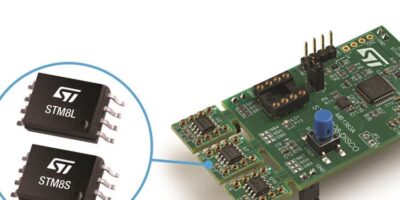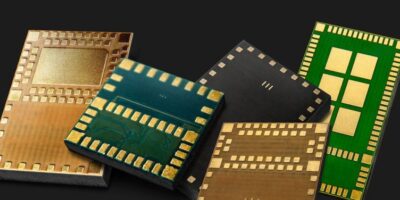The One-Board Discovery Kit from STMicroelectronics contains three eight-pin STM8 microcontrollers and is offered for sale by STMicroelectonics for less than $10.00.
The STM8-SO8-Disco 8bit microcontroller Discovery Kit lets users evaluate all three STM8 variants currently available in the popular eight-pin SO8 package, says STMicroelectronics.
The simple kit has a single button and indicator LED for interacting with the board, while the embedded STLINK/V2 and USB port simplify in-circuit debugging and programming from a connected PC. The microcontrollers are soldered onto individual break-offs that can be separated from the compact main board as pluggable DIL-8 modules ready to start prototyping.
The supported MCUs are the STM8S001J3M3, STM8L001J3M3, and STM8L050J3M3. The STM8S001J3M3 delivers affordable performance with features including advanced 16bit timers with three comparator outputs, three capture-compare channels, a 10bit ADC, and an 8bit timer. The low-power STM8L001J3M3 consumes just 0.3 microA in ‘halt’ mode and integrates 8- and 16bit timers and two comparators. The STM8L050J3M3 adds a 12-bit ADC and four-channel DMA controller for low-power technology.
The microcontrollers have the STM8 core, running at 16MHz, and 8kbyte on-chip flash. System-control features include watchdog and clock control, and popular communication interfaces including UART, SPI, and Fast I2C. The microcontrollers have up to six user I/Os, making them suitable for use in industrial sensors, home-automation devices, smart lighting, access cards, battery chargers, or smart printer cartridges.






